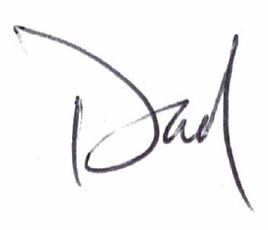
Florida’s beautiful cloudless days can be epic. I took my then 4 year-old daughter to a Gulf Coast beach and I remember it to be pleasant yet breezy which helped with the humidity. With few people there, seagulls flying above gentle surfs and my daughter building sandcastles, it was picture-perfect for me. But for my daughter, she had a very different but equally memorable day. First, I led her to knee-deep water and a gentle wave splashed water onto her face. She didn’t expect seawater to be so salty and it caught her completely off guard. It repelled her and she didn’t want to wade in it anymore. And then I taught her to watch for receding seawater as it is a sign of tsunami. Maybe because of current events that year which was why it was topical. I also didn’t think why it was necessary to tell a 4 year-old who wouldn’t be left alone by the seaside anyway about such a survival tip. But these two memories seared into my daughter’s mind that oceans are vicious places.
My daughter has since swum in rivers, lakes and oceans and now know saltwater is a totally natural and cleansing part of our environment. But it was a recent story I had read to her which triggered the tsunami memory of so many years ago. She told me that as a four year-old, she thought for days afterwards about the terror I had instilled in her. All she could think of was getting pulled into the sea by a water monster coming from the deep and dragging her to murky depths. Grade school science classes notwithstanding, tsunami’s aren’t just natural underwater earthquakes, but stuff of irrationality taught by her father!
Unbeknownst to me, I had taught my daughter using fear. While the emotion is a powerful instrument and children can use that to map boundaries, what I wound up doing was inadvertently frightening her at best and creating a phobia at worst. Yes, there are many hazards in the world and children do not see them the way we do. But I didn’t need to scare her with a worst-case scenario dooming her to imagine a ghastly, salty death.
![]()
While the emotion is a powerful instrument and children can use that to map boundaries, at best, it can inadvertently frighten, at worst, it can create a phobia.
Most childhood fears are taught by parents as a way to convince children of a negative outcome if they don’t comply. For example, the monster in the closet comes out if they don’t go to sleep. Or love and affection can be withheld if a child’s behavior does not conform with expectations. We have only ourselves to blame for these.
The best way to mitigate and head off the fear in a child is (as simple and as boring as it sounds) to be informed and to be supported by you as the adult. It’s not just empowerment for the child, but for the adult as well. People generally fear the unknown. The future, for example, is murky because we do not and cannot know what is to come and are powerless to prepare for it. Students fear exams because they don’t know the topics well enough and flunking can have downstream consequences. Young drivers fear road tests because they may not be able to react to real-world traffic, crash and fail to get a license. And great apprehension can take place where an interviewee feels much pressure riding on a single conversation. In all, these fears if left unchecked can have pivotal and devastating consequences.
The lifelong lesson for children (and for us) is to group things into what is knowable now and our ability to have some sort of insight into what is currently unknowable so even if we can’t prepare, at least we can map out the boundaries of our comfort zone. For my daughter, staring out onto a horizon where the sea meets the sky, her imagination took over and filled her head with unknowable things she couldn’t control. Her only recourse was to retreat to land and build sandcastle shelters to block it out. I’m just lucky she was opened enough to bring up this fear I had planted years ago. She’s lucky that her growing mind continues to absorb the workings of the world around her and expanding her comfort zone with facts and knowledge. And in the end, I hope she realizes there’s nothing to fear but fear itself—along with the nonsense that her old man used to scare her with.

